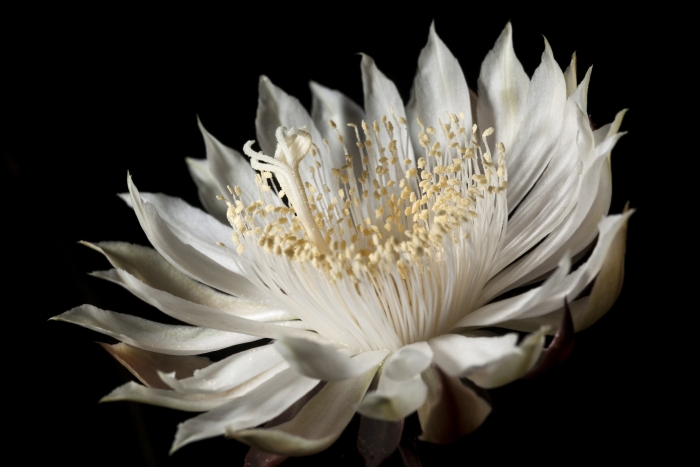Nightblooming Cereus
(Peniocereus greggii)
Nightblooming Cereus (Peniocereus greggii)
/
/

Cecelia Alexander
Public Domain
Image By:
Cecelia Alexander
Recorded By:
Copyright:
Public Domain
Copyright Notice:
Photo by: Cecelia Alexander | License Type: Public Domain | License URL: http://creativecommons.org/publicdomain/zero/1.0/ | Rights Holder: Cecelia Alexander | Publisher: iNaturalist | Date Created: 2018-05-10T20:36:30-07:00 |

















































Estimated Native Range
Summary
Peniocereus greggii, commonly known as Nightblooming Cereus or Desert Night-Blooming Cereus, is an evergreen succulent native to the Sonoran and Chihuahuan Deserts, including rocky and sandy soils, dry washes, and rocky outcrops in the Southwestern USA and Northern Mexico. It typically grows to a height of 5-7 feet and a width of 5 feet. The plant has slender, gray-green stems about 1/2-1 inch wide with 6-9 ribs and spines along the edges. Its large, showy, white flowers can reach up to 30 centimeters in diameter and emit a strong vanilla scent. The flowers open after sundown and close by the following morning, usually blooming synchronously for one night in June or July.
Nightblooming Cereus is valued for its spectacular nocturnal blooms and its ability to thrive in hot, arid environments with minimal care. It is often used in xeriscaping and as a dramatic specimen in rock gardens or desert landscapes. The plant’s large underground tuber, which helps it survive drought, is edible and has a taste reminiscent of sweet potato. In cultivation, it prefers part shade, very low to low water requirements, and well-draining soil. While it is generally low-maintenance, it can be susceptible to root rot if overwatered.CC BY-SA 4.0
Nightblooming Cereus is valued for its spectacular nocturnal blooms and its ability to thrive in hot, arid environments with minimal care. It is often used in xeriscaping and as a dramatic specimen in rock gardens or desert landscapes. The plant’s large underground tuber, which helps it survive drought, is edible and has a taste reminiscent of sweet potato. In cultivation, it prefers part shade, very low to low water requirements, and well-draining soil. While it is generally low-maintenance, it can be susceptible to root rot if overwatered.CC BY-SA 4.0
Plant Description
- Plant Type: Succulent
- Height: 5-7 feet
- Width: 4-5 feet
- Growth Rate: Slow
- Flower Color: White
- Flowering Season: Spring, Summer
- Leaf Retention: Evergreen
Growth Requirements
- Sun: Part Shade
- Water: Very Low, Low
- Drainage: Fast
Common Uses
Drought Tolerant, Fragrant, Low Maintenance, Showy Flowers
Natural Habitat
Native to the Sonoran and Chihuahuan Deserts
Other Names
Common Names: Desert Night-Blooming Cereus, Deer-Horn Cactus, Arizona Queen Of The Night, Sweet Potato Cactus, Reina De La Noche, Saramatraca
Scientific Names: , Peniocereus greggii, Peniocereus greggii var. greggii, Cereus greggii var. greggii, Cereus greggii var. cismontanus, Cereus greggii var. roseiflorus,
GBIF Accepted Name: Peniocereus greggii (Engelm.) Britton & Rose